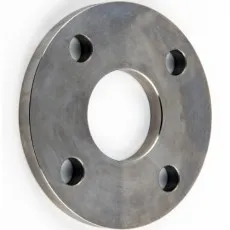-
Cangzhou Yulong Steel Co., Ltd.
-
Phone:
+86 13303177267 -
Email:
admin@ylsteelfittings.com
- English
- Arabic
- Italian
- Spanish
- Portuguese
- German
- kazakh
- Persian
- Greek
- French
- Russian
- Polish
- Thai
- Indonesian
- Vietnamese
- Zulu
- Korean
- Uzbek
- Hindi
- Serbian
- Malay
- Ukrainian
- Gujarati
- Haitian Creole
- hausa
- hawaiian
- Hebrew
- Miao
- Hungarian
- Icelandic
- igbo
- irish
- Japanese
- Javanese
- Kannada
- Khmer
- Rwandese
- Afrikaans
- Albanian
- Amharic
- Armenian
- Azerbaijani
- Basque
- Belarusian
- Bengali
- Bosnian
- Bulgarian
- Catalan
- Cebuano
- China
- China (Taiwan)
- Corsican
- Croatian
- Czech
- Danish
- Esperanto
- Estonian
- Finnish
- Frisian
- Galician
- Georgian
- Kurdish
- Kyrgyz
- Lao
- Latin
- Latvian
- Lithuanian
- Luxembourgish
- Macedonian
- Malgashi
- Malayalam
- Maltese
- Maori
- Marathi
- Mongolian
- Myanmar
- Nepali
- Norwegian
- Norwegian
- Occitan
- Pashto
- Dutch
- Punjabi
- Romanian
- Samoan
- Scottish Gaelic
- Sesotho
- Shona
- Sindhi
- Sinhala
- Slovak
- Slovenian
- Somali
- Sundanese
- Swahili
- Swedish
- Tagalog
- Tajik
- Tamil
- Tatar
- Telugu
- Turkish
- Turkmen
- Urdu
- Uighur
- Welsh
- Bantu
- Yiddish
- Yoruba

Nov . 19, 2024 08:21 Back to list
din slip on flange
Understanding DIN Slip-on Flanges A Comprehensive Overview
In the realm of piping and fittings, flanges play a crucial role in connecting pipes, valves, and other equipment. Among the various types of flanges, DIN slip-on flanges stand out for their versatility and ease of use. In this article, we will delve into the characteristics, applications, and advantages of DIN slip-on flanges, as well as best practices for their installation and maintenance.
What are DIN Slip-on Flanges?
DIN slip-on flanges, as the name suggests, are flanges designed to slip over the end of a pipe. The “DIN” in their designation refers to the Deutsches Institut für Normung, or the German Institute for Standardization, which has established the standards for these flanges. These flanges are typically made from a variety of materials including carbon steel, stainless steel, or alloy steel, making them suitable for a wide range of applications.
Characteristics of DIN Slip-on Flanges
1. Design and Structure Slip-on flanges are characterized by a flat face that allows for a smooth surface to connect with the pipe. They usually have raised grooves or a weld neck to secure the flange to the pipe through welding. The flat design makes them ideal for low-pressure applications.
2. Dimensions DIN slip-on flanges come in various sizes and pressure ratings, which makes them adaptable to numerous industrial requirements. They are commonly available in diameters ranging from a few millimeters to several meters, accommodating different piping systems.
3. Standardization The use of DIN standards means that these flanges provide consistency and compatibility within various piping systems, which is essential for industries that require stringent safety and quality measures.
Applications of DIN Slip-on Flanges
DIN slip-on flanges are widely used in several industries, including
- Oil and Gas They are used for piping systems in oil and gas industries where the integrity of the connection is paramount under varying pressure and temperature conditions. - Chemical Processing The chemical industry utilizes slip-on flanges due to their resistance to corrosion, especially when made from stainless steel, making them suitable for various chemical transfers.
- Water Treatment In water and wastewater treatment facilities, these flanges help connect different lengths of piping while ensuring robust seal integrity against leaks.
- Power Generation The power generation sector employs DIN slip-on flanges to manage the flow of fluids under high temperature and pressure conditions, making safety and reliability critical.
din slip on flange

Advantages of DIN Slip-on Flanges
1. Ease of Installation One of the primary benefits of slip-on flanges is their straightforward installation process. They can be easily aligned with the pipe, and once in place, they are welded, providing a firm and secure connection.
2. Cost-Effectiveness Compared to other flange types, slip-on flanges tend to be more economical, offering a balance of performance and affordability. Their lower manufacturing costs contribute to overall project savings.
3. Flexibility DIN slip-on flanges can be used in multiple orientations and applications, making them a flexible solution in various installations.
4. Reduced Risk of Leakage Properly installed slip-on flanges provide robust sealing and are less prone to leaks compared to other connection types, enhancing the integrity of the piping system.
Best Practices for Installation and Maintenance
1. Surface Preparation Ensure that the surfaces of both the flange and the pipe are clean and free of any debris or rust before installation.
2. Proper Alignment When installing the flange, it is crucial to align it correctly with the pipe to avoid undue stress, which can lead to premature failure.
3. Welding Techniques Employ appropriate welding techniques and standards to ensure a strong connection. Inspect the welds to ensure they are free of cracks and voids.
4. Regular Inspections Regularly check the flanges for signs of wear, corrosion, or leakage to maintain the integrity of the piping system.
Conclusion
DIN slip-on flanges are an essential component in various industries, providing efficient and reliable connections for piping systems. Their ease of installation, cost-effectiveness, and flexibility make them a preferred choice among engineers and contractors alike. Understanding their characteristics, applications, and best practices will ensure optimal performance and longevity in any piping system they are used in.
Latest news
-
ANSI 150P SS304 SO FLANGE
NewsFeb.14,2025
-
ASTM A333GR6 STEEL PIPE
NewsJan.20,2025
-
ANSI B16.5 WELDING NECK FLANGE
NewsJan.15,2026
-
ANSI B16.5 SLIP-ON FLANGE
NewsApr.19,2024
-
SABS 1123 FLANGE
NewsJan.15,2025
-
DIN86044 PLATE FLANGE
NewsApr.19,2024
-
DIN2527 BLIND FLANGE
NewsApr.12,2024
-
JIS B2311 Butt-Welding Fittings LR/SR 45°/90° /180°Seamless/Weld
NewsApr.23,2024











